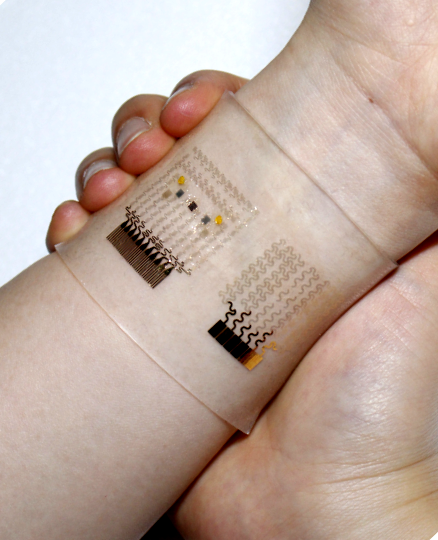Patching in to easier diabetes
 Korean engineers have unveiled a wearable, sweat-sensing patch that can monitor and regulate blood glucose levels.
Korean engineers have unveiled a wearable, sweat-sensing patch that can monitor and regulate blood glucose levels.
The graphene-based patch has been used to deliver metformin - a drug used to treat diabetes - through the skin to reduce high blood glucose levels in diabetic mice.
The team says that detecting glucose in sweat could be a good alternative to finger pricking, which can be painful and has low patient compliance.
Graphene has been looked at for wearable electronics before, due to its flexibility, electrical conductance, transparency, softness and very thin makeup.
But the way that graphene is synthesised has limited its use in electrochemical devices for the detection of biochemical markers, such as pH, ions, and biomolecules.
Now, Professor Dae-Hyeong Kim and colleagues say that by adding gold particles to graphene and combining it with a gold mesh, they can create a flexible, semi-transparent patch with monitoring and feedback applications for diabetics.
It contains a variety of sensors that detect humidity, glucose, pH and temperature. Because the enzyme-based glucose sensor is affected by pH changes in sweat, the pH and temperature sensors correct the glucose measurements by taking into account pH and temperature in real time, improving its reliability.
Finally, when the patch senses a high glucose concentration in sweat, heaters embedded in the patch trigger microneedles to dissolve their coat and release the drug metformin.
The patch will soon be tested on two human males.
The authors note that the drug delivery components of the patch will need to be scaled up before it can be effectively trialled with human diabetic patients.








 Print
Print